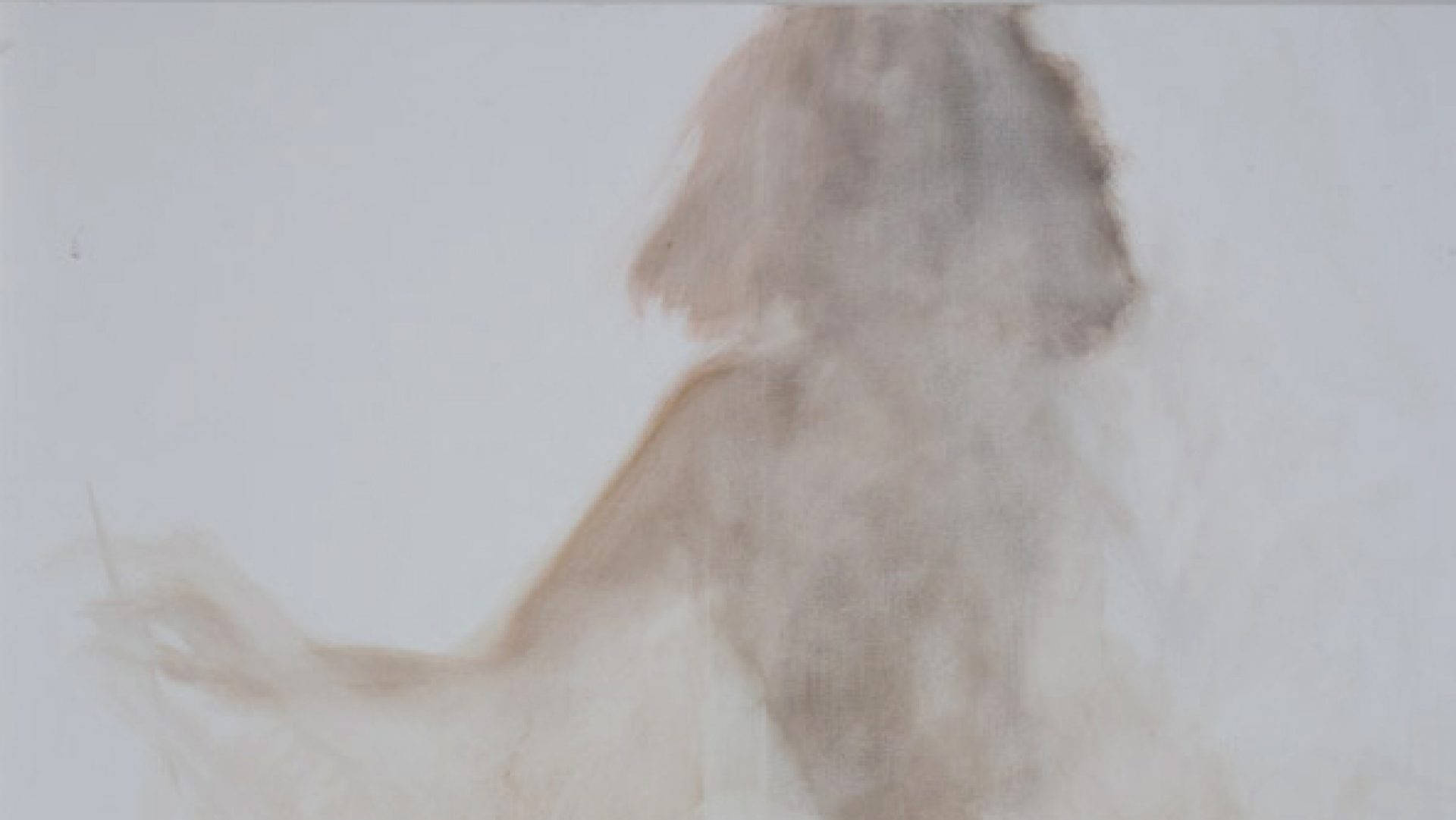Dal bianco al nero
Sono stato immediatamente attratto dai lavori di Monica Ferrando, visti in uno studio di Vetralla dove ero andato per capire quanti suoi quadri potevo mettere in una collettiva dedicata al “bianco”. Nello studio di Monica, a prima vista, ho deciso che quei lavori andavano messi tutti e che dovevo dedicarle una personale nella sala grande dell’Istituto Italiano di Cultura di Londra, che allora dirigevo. Monica accettava la tela bianca, la immaginavo osservarla e decidere cosa potesse arrivare su quella tela. Un processo lento, che viene da lontano: una ciotola, una corda, del latte, bucce di patate, chiodi, briciole e del sale venivano dipinti sul bianco. Monica conosce bene la poesia, e io immagino i suoi quadri “bianchi” come una costante erosione prima mentale e poi fisica, esattamente lo stesso processo di erosione che un poeta fa con le parole. Esiste poi uno stato successivo di questo lavoro, stato che a Londra in una mattina piena di sole di tarda primave- ra ho condiviso con Monica: la fase di allestimento di queste opere. Quella mat- tina abbiamo capito come tutte insieme queste pitture funzionano benissimo, come insieme e su una linea, nella stessa parete bianca.
Dopo il bianco e i suoi pochi segni, Monica ha iniziato a dipingere i suoi pa- esaggi neri. Apparentemente molto diversi dall’erosione bianca, i paesaggi neri sono in realtà frutto di uno stesso processo mentale. C’è un estremo buio dal quale emerge un soggetto che sembra vivere di luce propria: un cespuglio, un campo, un ramo, che spesso diffondono la loro luce.
Conosco quella luce, ne ho avuto bisogno. La trovavo nelle notti di luna piena, obbligato dalla tecnica fotografica a lavorare su realtà luminose. Monica credo che la autoproduca dopo aver immaginato o sognato apparizioni dal buio. Così è iniziato un lavoro sulla tela che è opposto al lavoro sul bianco, ma ha un punto di incontro nella sottrazione per nero e successiva rivelazione. Monica oscura la tela bianca, poi, tramite una luce genera una apparizione, e infine lavora sul confine dove luce e ombra si sfiorano. In questo gesto fisico e mentale sta la riuscita di queste opere.
From white to black
I was immediately attracted to Monica Ferrando’s works, which I saw in a stu- dio in Vetralla where I had gone to try to figure out how many of her paintings I could include in a group show devoted to “white”. At first sight in Monica’s studio I decided that all those works needed to be included and that I needed to devote a solo show to her work in the large room of the Italian Cultural Institute in London, where I was the director at the time. Monica accepted the blank can- vas, I imagined her looking at it and deciding what might appear on that canvas. It is a slow process that comes from afar: a bowl, a rope, some milk, potato peels, nails, crumbs and salt were painted on the colour white. Monica is well versed in poetry, and I imagine her “white” paintings like a constant mental and then phys- ical erosion, exactly the same process of erosion that a poet brings about through words. There is also a subsequent state of this work, a state that in London, on a late spring morning filled with sunlight, I shared with Monica: the installation phase of the works. That morning we clearly understood how these paintings all work perfectly together, as a whole and on a line, on the same blank wall.
After the colour white and its few signs, Monica began painting her black landscapes. Apparently very different from the white erosion, the black land- scapes are actually the result of the same mental process. There’s an extreme darkness from which what emerges is a subject who seems to live of its own light: a bush, a field, a branch, which often spread their light.
I am familiar with that light, I have needed it. I would find it in nights when the moon was full, compelled by photographic technique to work on “luminous” re- alities. I believe that Monica self-produces it after imagining or dreaming of ap- paritions emerging from the dark. Thus began her work on the canvas that is the opposite of her work on the colour white, but intersects in the subtraction by black and the subsequent revelation. Monica obscures the white canvas and then, by way of light, she generates an apparition. Lastly, she works on the edge where light and shadow touch. The success of these works lies in this physical and mental gesture.
